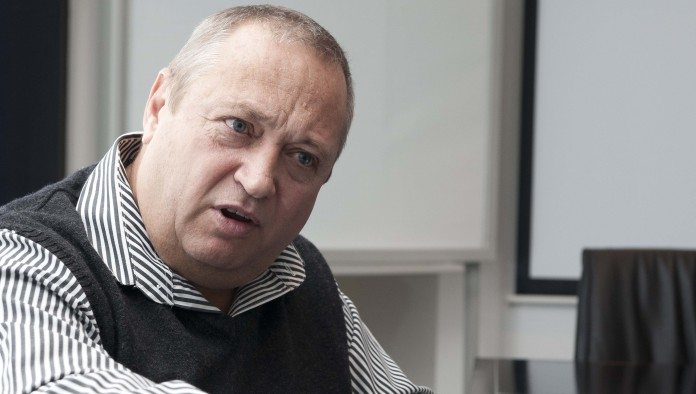
Sibanye-Stillwater CEO Neal Froneman today effectively “threw down the gauntlet” to the Department of Mineral Resources (DMR) and local communities that are disaffected with Lonmin warning that further trouble could scupper the proposed takeover deal.
One of the key conditions precedent revealed at a briefing to financial analysts and media held in Johannesburg was that there must be “no cancellation of any prospecting or mining right held by Lonmin, pursuant to Section 47 of the Minerals and Petroleum Resources Development Act having a material adverse effect.”
Operations on a number of Lonmin shafts have been disrupted this year by protests organised by the Bapo ba Mogale local community .
In late November it was revealed by Fin24 that the DMR was weighing whether Lonmin was in breach of its social and labour plans following allegations in a letter by Mining Forum SA. Non-compliance with social and labour plan commitments can provide grounds for the DMR to suspend a mining right.
Froneman said today, “ communities that are unhappy; the DMR that is unhappy; (they) need to stop and allow us to complete this so that in the longer-term we can do more.”
He also pointed out that, while there was no break or cancellation fee stipulated in the deal, there was an agreement in principle for Sibanye-Stillwater to acquire certain assets from Lonmin if the deal was not approved by Sibanye-Stillwater shareholders.
Froneman declined to specify which Lonmin assets he wanted and commented, “this is at Lonmin’s election. It will be a discussion we still have to have.”
He added that Sibanye-Stillwater/Lonmin had not been in contact with the DMR ahead of the announcement of the deal because of tight restrictions enforced by the rules of the London Stock Exchange which state only six outside parties may be informed.
He said priority had been given to Lonmin’s lenders and key shareholders including – “that particular shareholder” – which he did not name but was a clear reference to the PIC which holds a 29% stake in Lonmin and is also a material shareholder in Sibanye-Stillwater.
Froneman commented that, “Ben (Magara) and I met with that particular shareholder as one of the six and I don’t want to speak on their behalf but we had a very constructive meeting.”
Lonmin CEO Ben Magara said he had spoken to Minister of Minerals and Resources Mosebenzi Zwane this morning and commented the response was “constructive and supportive”.
One major potential source of further discord with communities and the DMR is that Lonmin intends retrenching 12,600 employees over the next three years – about one third of its current 32,500 strong workforce – as it shuts down “generation one” shafts which are reaching the end of the reserves.
Both Froneman and Magara stressed that these retrenchments would have taken place irrespective of the proposed takeover but Froneman added a further 890 people could be affected in terms of the revised business plan that Sibanye-Stillwater intends bringing in.
Turning to the specific benefits for Sibanye-Stillwater, Froneman said this deal was the logical “fourth step” in his group’s pgm (platinum group metal) plans which secured the entire pgm value chain by completing the mine-to-market strategy.
A key factor was the acquisition of Lonmin’s processing and refining facilities which would end Sibanye-Stillwater’s current situation of effectively being a “contract miner” for Anglo American Platinum (Amplats)
Froneman said that because of contractual commitments to Amplats, Sibanye-Stillwater would not be able to treat concentrates from its Rustenburg division through Lonmin’s processing facilities until 2021.
Lonmin’s processing capacity was not sufficient to treat all of the Rustenburg production so Sibanye-Stillwater was looking at a R1bn project to build a new DC ARC furnace which would provide that capacity.
Questioned about Magara’s future role in the merged business Froneman said that was a discussion which had yet to take place.
Magara replied, “ask me in a year. It’s not a conversation that we have entertained so far because our focus has been on what is in the best interest of our shareholders. There’s a lot of work ahead over the next nine months to embed the transaction and run the business as robustly as we have been doing. “








